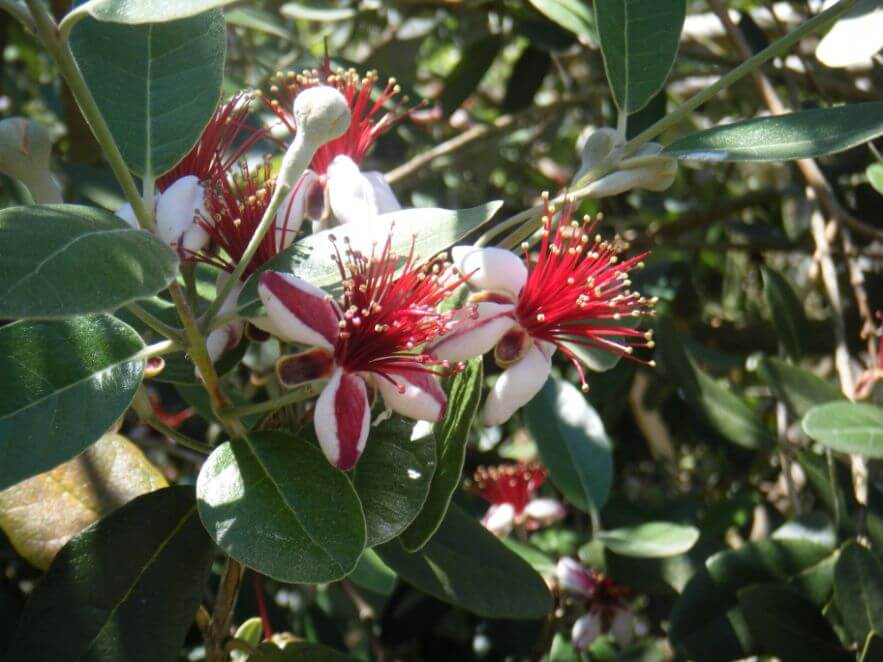Decorative, sweet, low maintenance and versatile; it comes as no surprise that Feijoa trees are a popular choice in Australian gardens.
Feijoa’s, otherwise known as pineapple guava, are fruit trees that develop delicious, sweet, tropical-tasting fruits. Not only are these fruits delicious, are full of immune boosting nutrients like flavonoids and phenolic compounds. With evergreen foliage set among flecks of silver and matte green, these trees serve both a practical and visual purpose.
In this post, we’ll look at the benefits of these trees, how to prune feijoa trees, and tips for taking care of feijoa trees. Use the following links to jump directly to the feijoa tree tips you’d like to see most.
Table of Contents
How feijoa trees benefit your garden
The best time to prune your feijoa trees
5 Pruning tips for feijoa trees
4 essential feijoa tree care tips
How to use feijoa trees to prevent future landscaping issues
Prefer to start from the beginning? Keep reading to learn about why Australians can’t get enough of their feijoa trees.
How feijoa trees benefit your garden
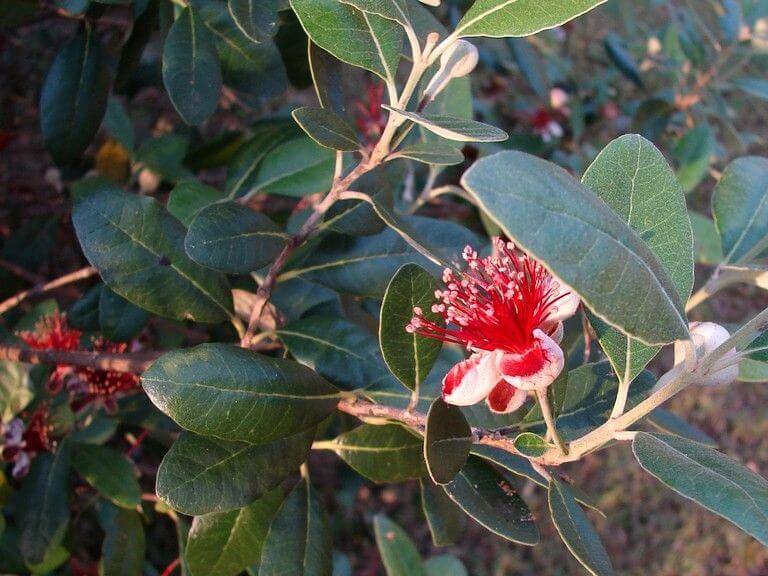
- Easy-growing feijoa trees are pest resistant and resistant to drought, making them a perfect option for the harsh Australian climate.
- Feijoas are an attractive plant and make for a perfect ornamental fruit tree in your garden. Plant them in a pot, a garden, a hedge to add privacy, a topiary along a fence line, or as a windbreak for highly wind-prone areas.
- Their hardiness makes them easy to grow and maintain.
- Feijoa trees are listed as one of the top trees that WON’T block your drains or disturb your underground plumbing.
If you’re already you’ve already cleverly planted a few non-invasive Feijoa trees in your garden, read on for some essential tips to give your Feijoa a long and healthy life.
Or, if you’re considering replacing some of your current trees with feijoas, check our list of invasive trees to avoid planting or keeping in your garden.
The best time to prune your feijoa trees
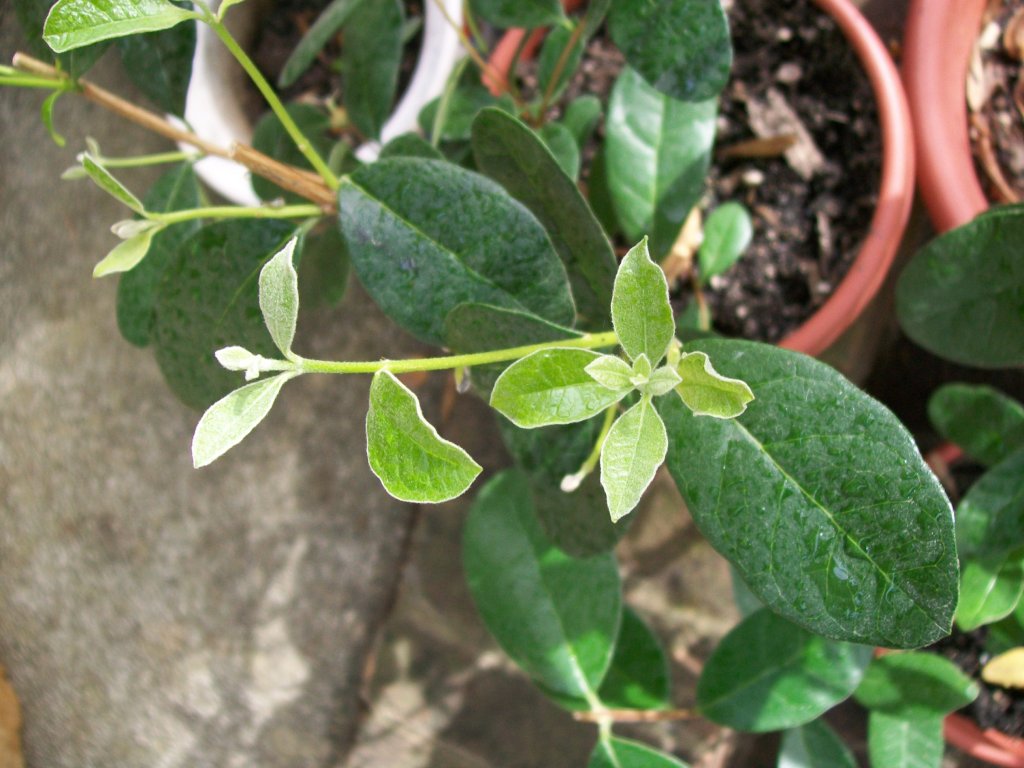
Spring
Feijoa fruit trees respond well to pruning, but timing is crucial. Feijoa’s fruit at the end of the season’s growth, so pruning should be avoided until spring is well and truly on its way out. This could be as late as early April or even May depending on the variety you’ve planted and your exact location.
Feijoa trees create a lot of growth in the early weeks of spring, indicating that they are just about to enter their flowering and fruiting seasons. While their size during this period can create some temptation to prune, take care not to do it until they finish fruiting in early winter. Even then, it’s important not to go overboard.
5 Pruning tips for feijoa trees
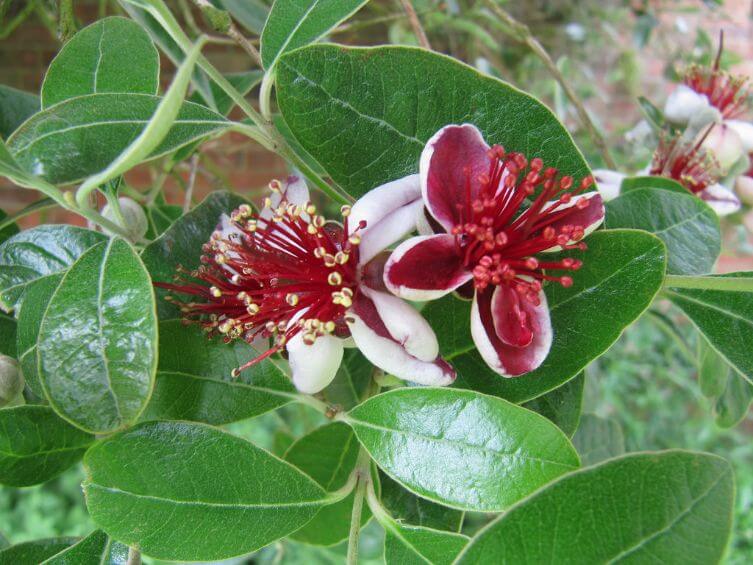
- Prune a few thicker branches off the bottom and throughout the middle to increase airflow and access for pollinators.
- Avoid pruning until you’re happy with the height of your tree (they can grow up to 5 metres high), which will likely be around 3-4 years of growth.
- Pruning triggers regrowth, and if you do your pruning too late into winter, there is a risk that the new growth will experience frosting and poor development.
- Use sharp tools when pruning your Feijoa and prioritise removing branches that criss-cross over each other and those hanging close to the ground.
- Trim back toward the leaf node to allow easy access for pollinators and be careful not to crush the branch during cutting.
Be careful with your timing, and your Feijoa tree will reward you with hardiness during winter and abundance during spring.
4 essential feijoa tree care tips
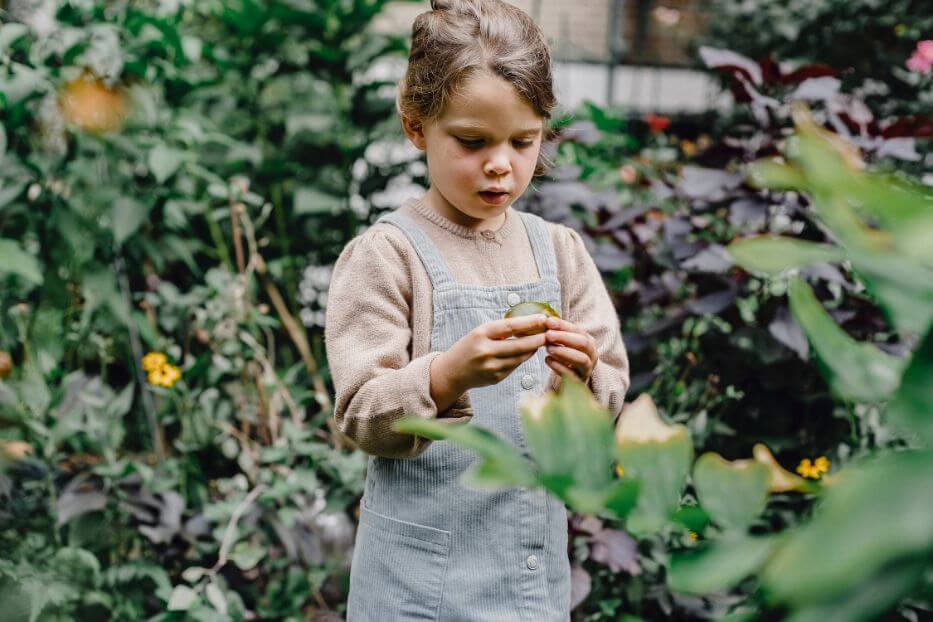
1. Find a sunny spot
Feijoas can withstand a range of conditions, but they truly thrive with cool winters and moderate summers, neither too hot nor too cold. They are happiest in a sunny position with well-drained soil and plenty of compost.
Planting them in their ‘off season’, aka autumn or winter, will allow them to establish their roots and prepare for the spring fruiting season. They will take around two years to begin to fruit, but once they do, they should keep a regular schedule of high growth when the sun is shining and durability during the frostier months.
2. Plant feijoas together
Wide varieties of Feijoa trees are available, allowing you a diverse fruiting season and improved pollination. Planting a few different types together will result in different fruiting times, better yields and a greater taste profile, benefiting each variety’s unique qualities.
Many Feijoa varieties are self-pollinating, meaning they do very well when planted together. Often used as a hedging plant, Feijoa’s are a great choice to grow against a fence line or to clump together to provide privacy and a solid, uniform appearance.
3. Don’t neglect the roots
Understanding the root system of the tree you plant is one of the best ways to ensure health for the tree and your pipes. Feijoa trees have a shallow root system, not requiring much base cultivation. Keep the area free from weeds and well mulched with lots of compost fed over time.
Pipe relining professionals highly recommend feijoa trees as one of the top trees that won’t block your drains due to their non-invasive nature. In addition, they will be highly pest and disease resistant with these easy-care steps.
4. Understand their planting preferences
A Feijoa tree will thrive when planted in fertile, free-draining soil. They can survive in a course, rocky soil, or clay; however, they will not cope if waterlogged for an extended period. Well-managed manure and a slow-release fertiliser will be your Feijoa’s best friend, and they can thrive in pots or on the ground.
Feijoas enjoy long, warm summers, yet they don’t mind a cool winter either. A mix of both temperature extremes will create fragrant and full flavoured fruit production, with the fruit splitting in scorching temperatures or freezing over in temperatures under 10C. This makes Feijoa plants an excellent choice for many Australian backyards.
How to use feijoa trees to prevent future landscaping issues
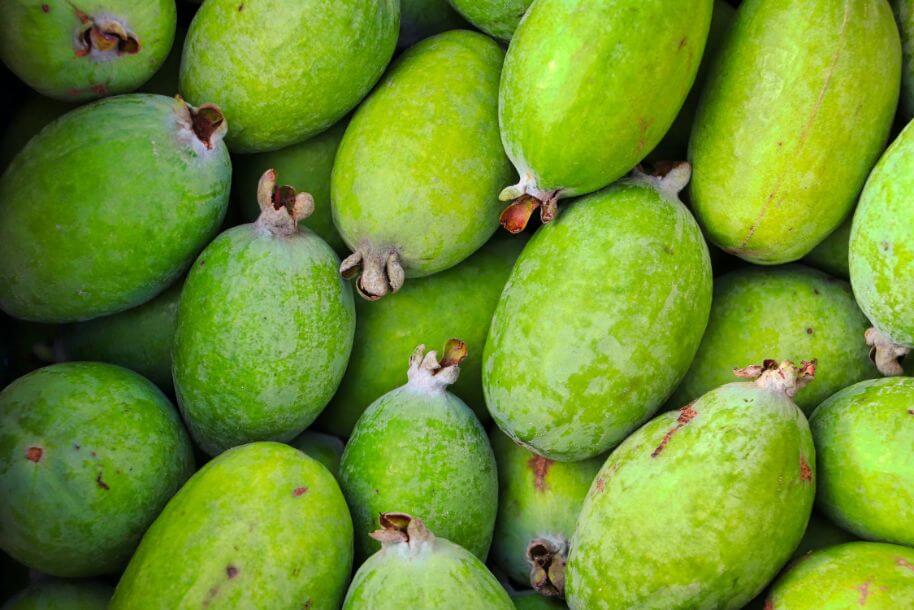
Along with delicious tropical-tasting fruits and a gorgeous appearance, a healthy Feijoa tree has non-invasive roots, making them a safe planting choice when considering how to landscape your property.
Replace invasive trees with feijoas
Tree root invasion is the number one cause of blockages and damage in pipes. If the wrong type of tree is planted, the roots can slither into the pipes, enjoying their moisture-rich environment. There, they quickly become entangled and grow into an impenetrable mass, resulting in backed-up toilets and slow-draining sinks.
Even if you have a tiny crack in your sewer pipe, a tree root can find its way in and develop into a significant issue. Early detection and pipe relining is the best way to prevent pipe damage.
If you’ve moved into a property with towering sycamore trees or willows, you will be saving yourself a lot of time, stress, and money by getting a professional team to check your underground pipes with a CCTV camera inspection. Otherwise, if you’re creating a new garden, opt for pipe-friendly trees such as Feijoa trees to keep your pipes free from root damage.
Our team can work on your pipes with a non-invasive, dig-free method, from the initial CCTV inspection to the tree root removal and relining. Our experienced team can make your pipes function at their best with the most advanced no-dig technology.
Call us at (02) 8339 4695 or book your free pipe relining consultation today.
Back to Top